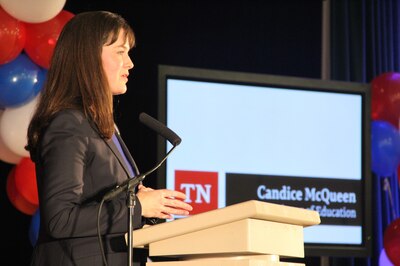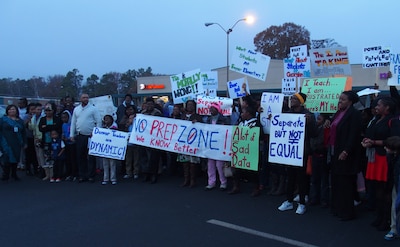For its next experiment in how to improve struggling schools, Tennessee is taking inspiration from a model that’s shown promise in a small city in Massachusetts.
Officials are eyeing Chattanooga for their first foray into the “partnership zone” approach. The city has many low-performing schools but so far has gone untouched by the state’s school improvement efforts.
In a partnership zone, clusters of schools are essentially turned into mini-school districts that are freed from many local rules and governed jointly by local and state officials. Local leaders get to experiment the same way that charter schools can, but they continue to have a say in how their schools are run. State officials get to push for needed improvements, but they aren’t solely responsible for strong results — something that has proven elusive so far for them.
The partnership zone idea originated in Springfield, Massachusetts, where an “Empowerment Zone” is finishing its second year. There, educators and community leaders who might oppose school takeovers — or be displaced by them — have embraced the zone, which has nine schools and is set to grow. As a result, people there say, changes in schools are gaining traction.
“You want district and school staff to be bought into the work the state is also trying to do,” said Ashley Jochim, an analyst at the Center on Reinventing Public Education, which specializes in educational governance and bureaucratic reform. “In the case of Springfield, that arrangement really helped to facilitate this buy-in.”

State education officials view Chattanooga as fertile ground for Tennessee’s first zone. The city has the state’s third-highest number of “priority schools” with test scores in the bottom 5 percent; and after years of local efforts to improve the schools without significant progress, the state is obligated to step in.
Plus, the district’s five priority schools are all part of the same “feeder pattern,” so that all students end up at the same high school. That eases collaboration and avoids a peril that many school improvement efforts face: Students have a better experience at one school, only to move on to another that’s still struggling.
“To have a strategy that may only be impacting one or two schools in the short run … may not be the best strategy,” said Education Commissioner Candice McQueen.
State officials could also move the Chattanooga schools into the Achievement School District, the state’s primary school-improvement strategy since 2012. Doing so would mean the state would turn the schools over to charter operators. Local leaders could give input but have no say in final decisions about who would run the schools, and how.
McQueen plans to review both possibilities with Hamilton County school leaders on Thursday. “We are continuing to discuss which option will be most successful,” she said Tuesday, emphasizing that no decision has been made.

But it’s clear that McQueen is eager to avoid the turf wars that have accompanied expansions of the Achievement School District. McQueen said recently that the state is reluctant to force the model in Chattanooga — a lesson learned from angry protests that have erupted with each school takeover in Memphis, the hub of the ASD’s work.
The partnership zone model is less vulnerable to criticism, not only because local officials continue to play a role, but also because it does not require schools to replace their leaders and teachers, as has happened when schools are taken over by the Achievement School District. Plus, teachers at the schools remain part of their local unions. While local unions have joined resistance against the state-run district in Memphis and Nashville, union leaders in Springfield have backed the zone there.
“By having a culture of change where the critical mass of people feel they have a voice in what is being done and ownership in the plan, the likelihood of implementing the plan with fidelity goes up dramatically,” the head of Springfield’s teachers union told the Boston Globe this winter.
The new approach reflects a broader shift toward empowering schools and districts to improve themselves. The most successful turnaround initiative in Tennessee, Shelby County Schools’ Innovation Zone, also gives principals the freedom to try changes tailored to their schools’ needs, and more resources to make that happen.
The shift in part responds to growing evidence that top-down changes are not producing needed increases in student learning. Schools in the Achievement School District, for example, are far from showing the test score gains that officials promised.
Efforts that give schools and districts more say in how they’re overhauled are increasingly seen as stronger bets. “The philosophy we’ve had as a department is that districts that help choose their own path will have the highest chance of success,” a Colorado official told Chalkbeat earlier this year. There, some Denver schools have joined a local “innovation zone” that’s similar to the partnership zone, but without state involvement.
Education Cities, a nonprofit that lobbies for innovative governance models such as partnership zones, examined the shift in a report released this month. The report, which examined Springfield’s zone in detail, concluded that local commitment is essential to making the difference that students need.
“Just appointing different administrators to oversee a school system without making changes — big changes — to the people running the schools or the operators running the schools has not led to significant change in other places where the strategy has been tried,” said Ethan Gray, CEO of Education Cities. “The name of the game is driving power and decision-making to the school level.”

